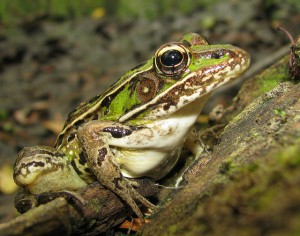Frogs and their wetland habitats in Iowa are contaminated with agricultural pesticides
Amphibian populations in the United States and around the world have been declining due to habitat degradation and loss. Now, a new study, published in Science of the Total Environment, has found that frogs found in Iowa wetlands are accumulating a large number of different pesticides in their tissues, including up to eight different fungicides, the largest number reported to date. Researchers compared restored wetlands and existing wetlands for agricultural nutrient and pesticide content in the water, sediments and in the tissues of leopard and chorus frogs, two common amphibians. Thirty two different pesticides and products from pesticide break-down were detected across all of the wetlands sampled, with the herbicide atrazine the most frequently present and with the highest concentrations. Seventeen pesticides composed of eight fungicides, four herbicides, and five insecticides were detected in frog tissues. These results are particularly concerning because they demonstrate the extent of our water contamination. Amphibians are particularly sensitive to environmental toxins, and even low doses of agricultural chemicals have been shown to directly impact amphibian health. For example, atrazine—the most commonly detected herbicide in this study—negatively impacts reproduction, physiology, physical characteristics, and behavior in frogs. Additionally, pesticide exposure and disease outbreaks in amphibian populations are highly correlated.



